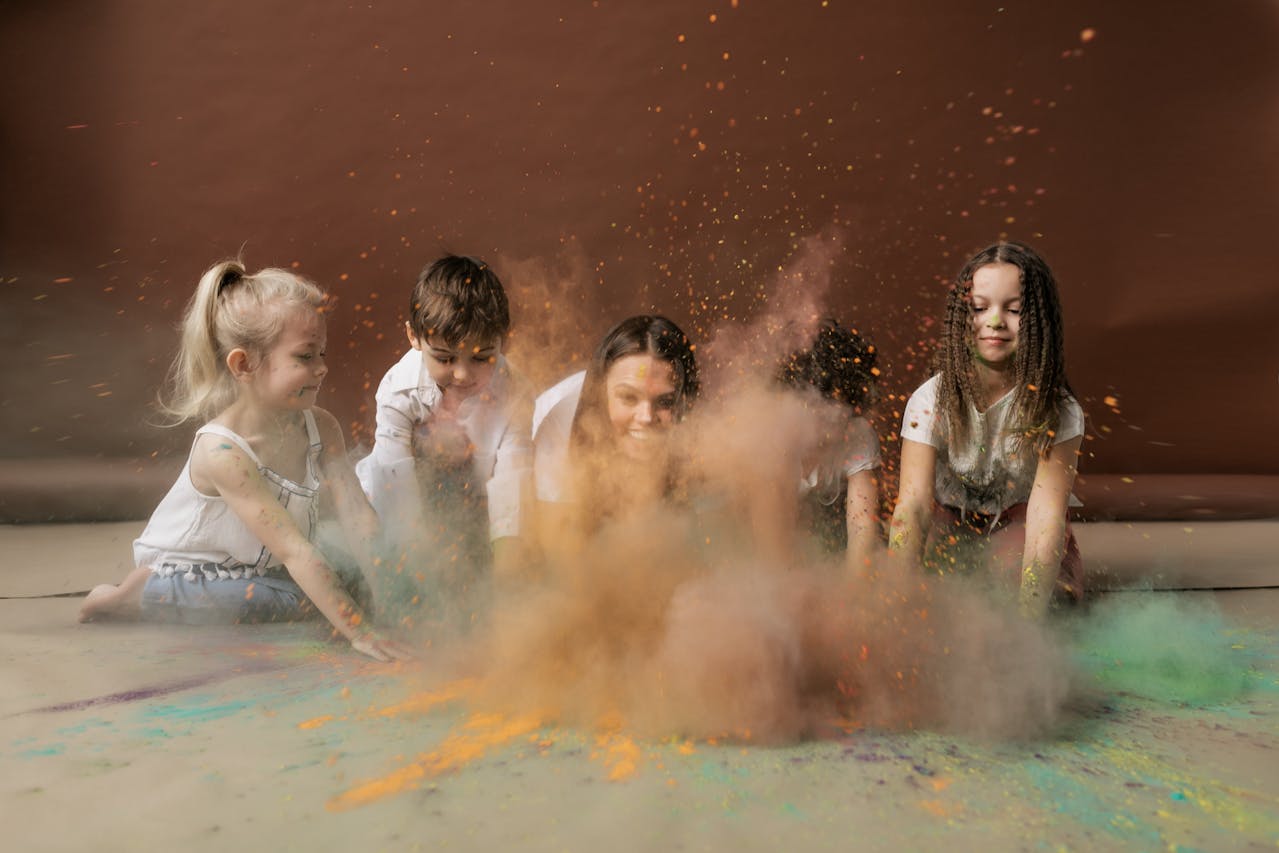“The hand is the instrument of the mind.” — Maria Montessori
Maria Montessori saw children not as empty vessels to be filled, but as naturally driven learners guided by an inner need to explore, master, and grow. Her approach—developed over a century ago—is still deeply relevant today, especially in play-based settings that value concentration, autonomy, and purposeful action. At Museo dei Bambini, Montessori-inspired principles shine through exhibits that invite children to use real tools, engage in self-directed tasks, and build their focus through repetition and challenge.
What Is the Montessori Approach?
The Montessori method is based on the idea that children learn best through hands-on interaction with meaningful materials in a thoughtfully prepared environment. Unlike traditional classrooms, Montessori spaces are calm, ordered, and designed around the child’s need for independence. Adults act as guides, offering gentle support rather than direct instruction.
Key principles include:
- Freedom within limits: Children choose their activities, but within an environment intentionally structured to support development.
- Prepared environment: Materials are arranged in a way that invites exploration and self-correction.
- Respect for concentration: Interruptions are minimized so children can fully engage with their tasks.
- Use of real tools: Children are trusted with authentic materials that promote responsibility, coordination, and confidence.
The Research Behind Montessori Learning
Multiple studies have confirmed the long-term cognitive, social, and emotional benefits of Montessori education. A 2006 study in Science found that children in Montessori classrooms showed significantly better outcomes in reading, math, and social behavior compared to peers in traditional settings.
🔗 Montessori Outcomes – Science Journal
A 2021 review published in Frontiers in Psychology noted that Montessori education promotes executive function, motivation, and creativity. The use of hands-on materials helps children move from concrete to abstract thinking more naturally.
🔗 Montessori and Executive Function – Frontiers
Montessori’s emphasis on freedom of choice also supports intrinsic motivation. When children pursue tasks that interest them at their own pace, they experience what psychologists call “flow”—a deeply focused state linked to better learning and emotional well-being.
Montessori Principles at Museo dei Bambini
While not a Montessori school, the museum exhibits incorporates many of the method’s core values by giving children space, tools, and freedom to follow their interests through hands-on engagement.
Builder’s Bench — Tools and Precision
At the Builder’s Bench, children use real hammers, screwdrivers, measuring tapes, and clamps (safely designed for young users) to construct simple projects. This kind of practical work develops fine motor skills, hand–eye coordination, and a sense of mastery. Children concentrate deeply as they turn screws or tap in nails—absorbed in the task and proud of the result.
Magnet Maze — Quiet Problem Solving
In this exhibit, children use handheld magnets to guide metal balls through a series of channels and mazes. There are no flashing lights or beeping sounds—just quiet focus. It’s a perfect example of how a calm, self-correcting activity can captivate a child’s attention and allow them to repeat a task until they’ve mastered it.
Ball Climb — Repetition and Discovery
Ball Climb invites children to carry balls up a ramped structure, release them, then retrieve and repeat. The simplicity of the task mirrors Montessori’s belief in repetition as a path to mastery. Each time, children notice something new: speed, bounce, trajectory. The cycle of action becomes a quiet study in physics and perseverance.
Mini Trail Blazer — Navigating with Purpose
This scaled-down obstacle course requires children to crawl, balance, and problem-solve their way through. It encourages controlled movement, spatial awareness, and risk assessment—skills central to Montessori’s “practical life” work and gross motor development.
STEM Baby Library — Order, Texture, and Cause & Effect
Even the youngest visitors find Montessori moments here. Soft, open-ended materials are arranged by size, color, and texture, inviting infants and toddlers to explore patterns, order, and cause and effect at their own pace. Nothing flashes or speaks. The environment is calm, the pace is slow, and the learning is deep.
What Educators Observe
“When children are given real tools and meaningful choices, they rise to the challenge,” says Lucia Ferraro, a Montessori-trained guide who collaborates with early learning centers across Italy. “They’re capable of great concentration, precision, and pride—even at three years old.”
Educators at the museum often witness long periods of focused attention—especially at the Builder’s Bench, where children return again and again to refine their work. “They don’t need us to entertain them,” a facilitator remarked. “They need us to get out of the way and let them work.”
What the Research Tells Us
A 2022 study in Child Development found that Montessori students not only perform well academically but also show higher levels of well-being, empathy, and persistence. The researchers attributed this to the structured independence built into Montessori environments.
🔗 Montessori and Child Outcomes – Child Development Journal
Another study from the University of Virginia found that Montessori preschoolers displayed more advanced executive function skills—such as flexible thinking and self-control—compared to peers in more traditional settings.
🔗 Executive Function in Montessori Preschoolers – UVA
What Families Experience
Parents often comment on how calm their children seem in these spaces. “My daughter stayed at the Magnet Maze for 20 minutes. She didn’t want help—she just kept trying and adjusting until she figured it out,” one parent said. “I saw a focus in her I usually only see when she’s drawing.”
Another family described the Builder’s Bench as “the place where our son felt like a grown-up. He was using real tools and didn’t want to stop.”
These moments of concentration, responsibility, and quiet pride reflect the deeper benefits of the Montessori mindset.
Why Montessori Principles Matter
In a fast-paced world filled with noise, distraction, and instant gratification, Montessori principles remind us of the power of slowness, simplicity, and intentionality. Children don’t need more stimulation—they need meaningful challenges, respectful environments, and tools that invite independence.
Montessori’s philosophy isn’t about preparing children for school—it’s about preparing them for life. When a child chooses their own task, solves a real problem, and feels pride in their work, they are building the foundation for resilience, focus, and self-confidence.
And it’s something families can bring home. Give your child real materials, invite them to help with daily routines, and respect their concentration. You don’t need to hover—just trust the process.
Want to Learn More?
🔗 American Montessori Society – What Is Montessori?
🔗 Montessori Principles Explained – The Montessori Notebook
🔗 Montessori and the Brain – Frontiers in Psychology
🔗 Science Magazine – Montessori Education Outcomes



